Be in the Know
Elevate your industry knowledge with PT articles and insights crafted by experienced industry experts
For casual exercisers, aspiring athletes, bodybuilders and the like, the gym is more than just a place we go to exercise and feel good. It’s where we hone our technique, improve our physique, connect with likeminded people and hit whatever goals we’ve set for ourselves.
In today’s health-conscious and engaged society, going to the gym is just as normal and commonplace as meeting friends after work for a drink. There are probably scores of people who nowadays would much prefer the former than the latter.
Whether a small town or sprawling metropolitan city, it’s likely that you’ll have easy and immediate access to some sort of fitness facility. It’s the abundance of places to work out, with over 7,000 gyms in the UK and over 38,000 in the US, that has turned active leisure into a multi-billion pound industry.
While contemporary gyms have all the facilities, equipment and amenities one could ever need, it’s taken several thousand years of development, new inventions, failed ideas and plenty of experimentation to get to this point.
In this article, we’re going to explore the figures who can be considered trailblazers and the movements and trends that have stood the test of time. As with any marvel of the day, the genesis lies with the Ancient Greeks.
While there are known records of structured exercise (weightlifting, aerobics and fitness training) being used in China, the Zhou dynasty (1046-256 BCE) and Ancient Egypt (2575-2130 BCE), it was the Ancient Greeks who truly set things in motion. They are cited as the creators of the gymnasium, a dedicated place for people to exercise and train.
Gymnasium derives from the Ancient Greek world gymos, which means naked, and that’s previously how athletes would train and compete in these open-air venues. Showing off the athletic male form was not only for aesthetic reasons, but it’s also thought to have been a tribute to the gods. Note that only men were permitted to train, a stance that would be upheld by many civilisations to come.
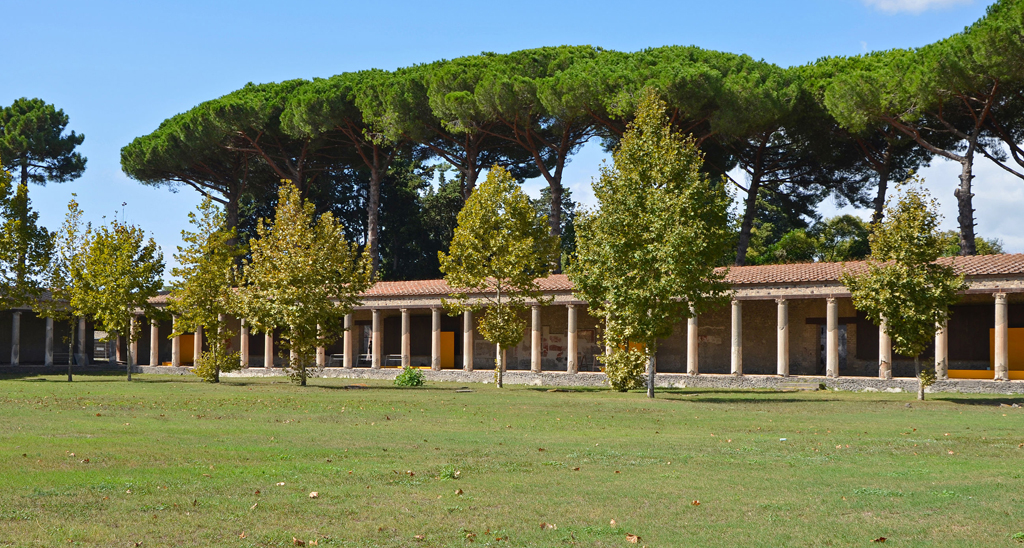
(Palestra Grande at Pompeii, an athletics field and a training ground for gladiators)
These gymnasiums were not solely used as places to train. People would also come for communal bathing, socialising and to engage in intellectual and philosophical pursuits. Plato and his student Aristotle were just two philosophical greats who would frequent these places. The rationale behind combining these pursuits is that it produced a sound body and mind. The Greeks used the word arete to describe this, which is often translated as ‘virtue’ or ‘excellence’. Essentially, it’s the process of becoming the best you can be and fulfilling your potential. For Greek men, the two pillars of physical exercise and education were critical to this.
While structured exercise and physical training continued to develop, particularly in the field of gymnastics, the advancement of the gym (or gymnasium) as a dedicated place to exercise did not. The downfall of the Greek and then Roman empires saw an appreciation for art, music, philosophy and the finely-tuned physical form subverted. With Christianity’s ascension in the West and Islam, Hinduism and Buddhism’s prevalence in the East, the physical form turned into something not to be admired, but rejected. Aesthetics was aggressively replaced by asceticism, and by the Middle Ages, exercise was simply a by-product of manual labour or military service, not something one pursued to achieve a greater purpose.
The Italian Renaissance (15th and 16th centuries) did see a revived interest in the aesthetics of man, Leonardo a Vinci being a notable name, but it wasn’t until 1799 when we saw the emergence of what is thought to be the world’s first private gymnastics club. The progenitor was Franz Nachtegall (or Vivat Victorius Fridericus Franciscus Nachtegall to give him his full name).
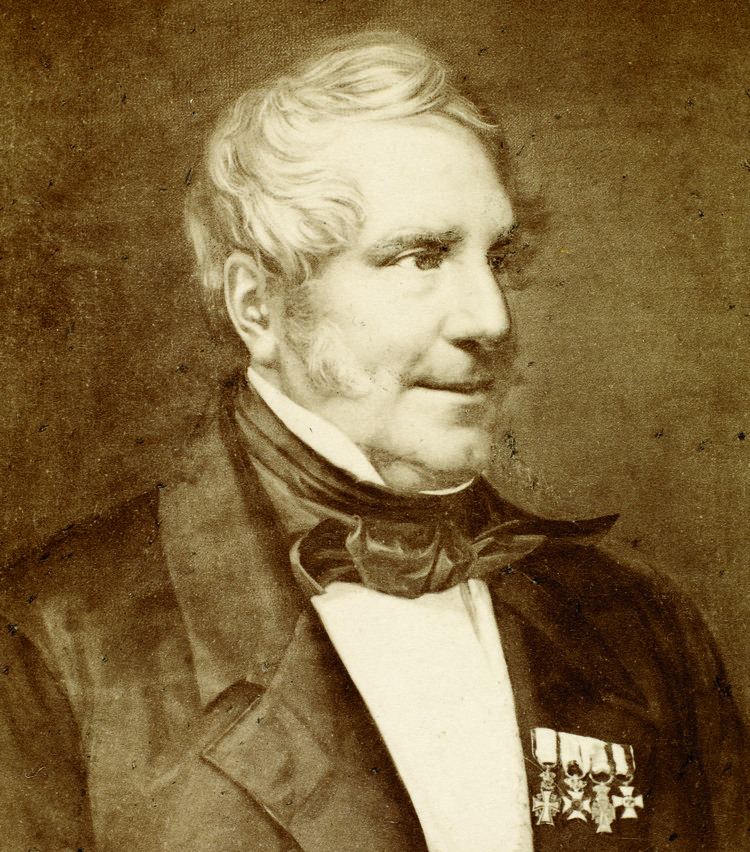
Born in Copenhagen, Denmark, it’s understood that Franz was responsible for introducing physical education into Danish schools. Inspired by the writings of Johann Christoph Friedrich GutsMuths, the grandfather of gymnastics, Franz’ gymnastics club was designed for large-scale classes featuring wooden dumbells, weighted medicine balls and vaulting.
While GutsMuths is considered the grandfather, it is Friedrich Ludwig Jahn who is dubbed the father of gymnastics (or Turnvater in native German). Born in Brandenburg, Prussia (now northeast Germany), Jahn was responsible for opening an open-air gymnasium in Berlin in 1811 (illustration below).
Jahn had previously been enrolled in the Prussian army but after their crushing defeat in 1806 at the Battle of Jeana-Auerstedt by Napoleon I’s French forces, he became a teacher. Prussia had always prided itself on military prowess and the humiliating defeat sent ripples throughout the Kingdom. It was very much a wake-up call on a seismic scale, revealing to the Prussians that their empire was as infallible as once thought.
This low point in Prussian history, however, served to spur Jahn on. He created the organisation Turnverein (‘gymnastics club’ if translating from German to English), which comes from the Teutonic word turnen, which means to do gymnastics. The gymnasium he opened in Berlin was called a turnplatz (‘gymnasium’ or more modernly translated as ‘fitness centre’ from German). This was seen as a means of restoring national pride by developing the physical prowess of Prussia’s boys and men.
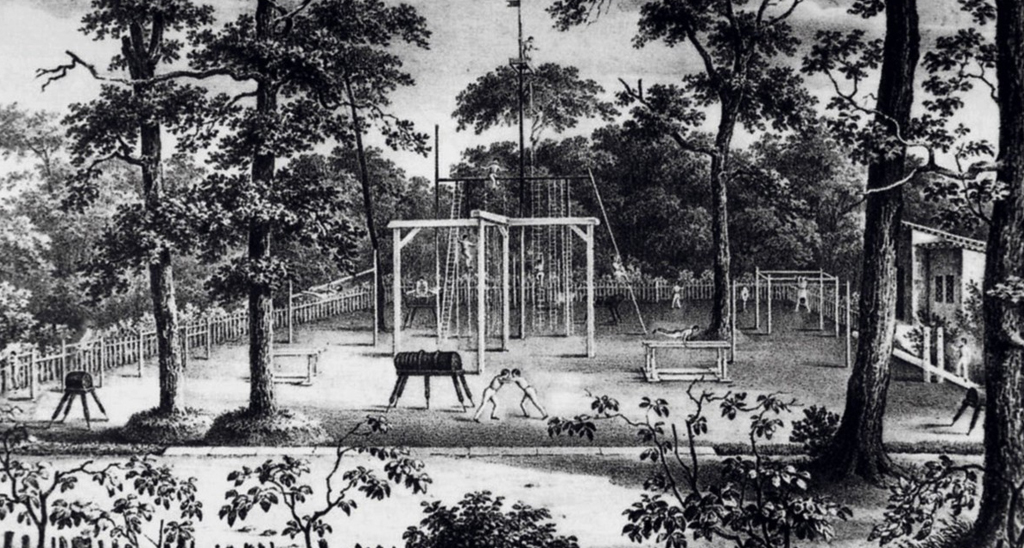
The ideas underpinning Turnverein saw turnplatz spring up across the globe and by 1860, it’s believed that were over 150. While the apparatus Jahn developed, high bar, parallel bars and rings are still used in modern gymnastics, historians have perhaps been a bit more critical of the nationalist mentality Jahn was attempting to inspire. At the time he was considered a liberal although he did malign foreign influences on Germany’s culture. Some have accused Jahn as being much more than simply the father of gymnastics, claiming there is a tangible link between Jahn’s ideas and the birth of National Socialism.
The popularity of gymnastics continued to spread throughout the world and just as Europe had given birth to the first gymnastic club, it’s also thought to be the birthplace of the world’s first gym membership.
In 1848, retired circus strongman Hippolyte Triat created Gymnase Triat. Originally located in Brussels, Belgium, this facility eventually found a permanent home in Paris, France. Occupying 100,000 square feet, which is one and a half times bigger than The White House, this grand environment was kitted out with Indian clubs, barbells, dumbbells and an extensive range of gymnastics apparatus.
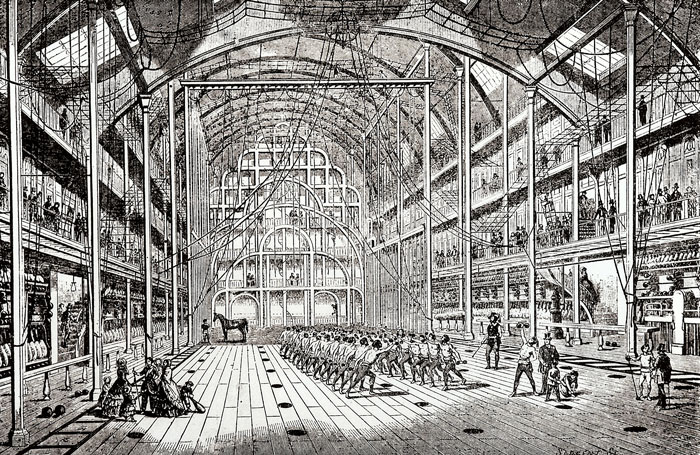
With the rise in popularity of Gymnase Triat, Triat himself saw a golden business opportunity and charged for membership to his facility. Prices ranged from 31 to 400 francs per month and rates greatly differed depending on whether you were male or female.
As we approached the 20th century, the evolution of gyms began to gather pace, thanks initially in part to businessman and eventual philanthropist, Sir George Williams. In 1844, Williams founded the Young Men’s Christian Association, now commonly known as the YMCA. Concerned about the welfare of his fellow workers in London, he started a bible and prayer study group that quickly established branches throughout England.
It’s believed that the YMCA in Boston was home to one of the US’s first multiple-purpose gyms in 1850. It’s important to note however that Friedrich Ludwig Jahn had opened a turnplatz in Cincinnati in 1848, though the focus will have been much more on gymnastics.
The 1880s saw what we can consider as the birth of personal training, pioneered by Ludwig Durlacher (also known as Louis Attila and by his stage name Professor Attila). Durlacher is an incredibly influential figure and thought to be one of the world’s first personal trainers.
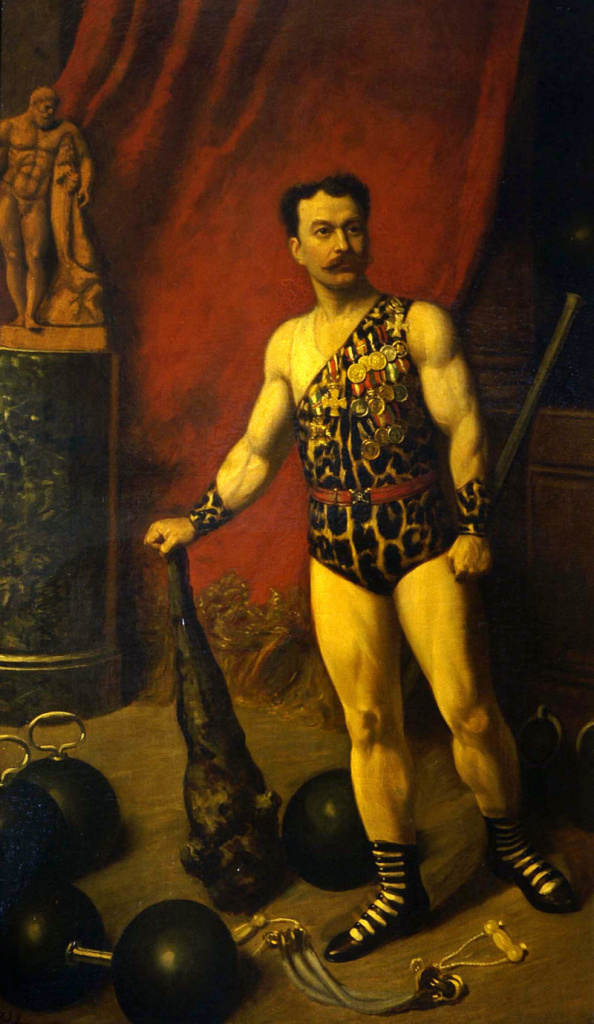
Durlacher is known to have trained some very prominent figures in his time including Alexander III, Czar of Russia, King Edward II, J.P. Morgan Jr, World Heavyweight Champion boxer James J. Corbett and Friedrich Wilhelm Muller (known more commonly by his anglicised name, Eugene Sandow), who is often considered of the most famous bodybuilders of all-time. Sandow is considered something of a pioneer and he’s credited with organising the world’s first bodybuilding competition.
The event took place in the Royal Albert Hall and Sandow took his place on the judging panel alongside English rower and sculptor Sir Charles Lawes-Wittewronge and one Sherlock Holmes creator Sir Arthur Conan Doyle.
Durlacher opened his first gym in Brussells in approximately 1886 and another gym in Bloomsbury, London in 1889 where he trained Eugene Sandow. To say Durlacher was self-assured and confident of his own methods would be something of an understatement. An 1894 advert in the National Police Gazette, which many considered to the proto-men’s lifestyle magazine in the US, read:
“One thousand dollars to any charity if I [Durlacher] cannot conclusively prove that every alleged instructor of physical culture in this country [the US] is a former pupil of mine or is using one of the systems I have originated and perfected, and which from time to time I have published”.
Regardless of the ego, it’s hard to argue that Durlacher was anything other than highly influential, specifically with regards to what he’s done for personal training. You might also think of him as a progressive, for the time, as he also encouraged encourage women to exercise.
Durlacher ran his third and final gym in New York right up until he died in 1924. If you’re interested to see more about the life of Professor Attila, the H.J. Lutcher Stark Center in Austin, Texas, obtained and then digitised a scrapbook full of press clippings and other memorabilia from throughout his life.
The rise of the fitness chain
The 20th Century saw the introduction and creation of many of the fitness industry practices and facilities that we’re used to today. Essentially, this is when fitness, as we know it, became an industry unto itself. It also sparked a schism in why people chose to or felt like they should exercise. The options for where to exercise were soon to become vast and it was no longer about simply achieving a goal, but any exercise goal.
In our look at the rise of on-demand fitness platforms, we explored how Jack LaLanne, the godfather of fitness helped pioneer exercise on TV after World World Two. The man is something of an invention powerhouse as he’s also credited with opening the US’ first health club, alongside developing the first leg extension machine and what would eventually become the Smith machine.
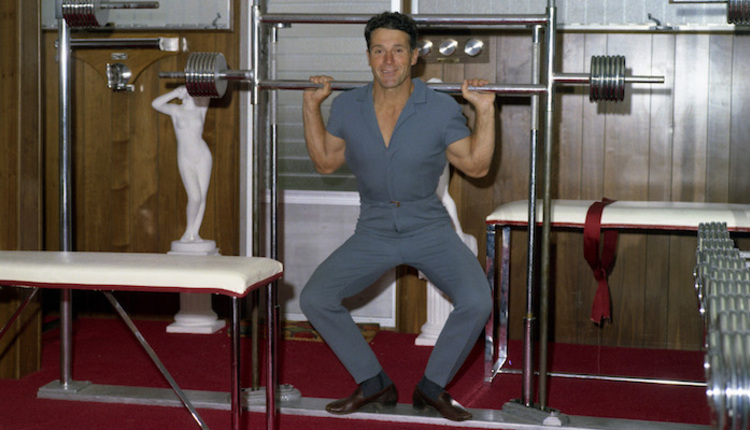
His Physical Culture Club Studio opened its doors in Oakland, California in 1936. The club was located on the third floor of an office building and he paid just a meagre $45 a month for rent – adjusting for inflation, that equates to approximately $800 today, or £600.
Jack’s penchant for weightlifting and heavy exercise, something he initially discovered while attending the YMCA in Berkeley, wasn’t to everyone’s taste. Despite the research he had conducted years earlier, observing the effects of weight loads and strength changes in firemen and police officers, some actively discouraged people to stay away from his health club.
In an interview with Outside Magazine in 1995, he explained the nature of the resistance he faced: “You wouldn’t believe the ridicule I got when the gym opened… They [doctors] said you wouldn’t be able to sleep if you worked out with me. They said I’d kill you. They said you wouldn’t be able to get an erection. They wrote in the newspapers that you’d get haemorrhoids if you came to my gym. That was a big one–they all brought up the damned haemorrhoids.”
While Jack LaLanne is credited with opening the US’ first-ever health club, it was Vic Tanny who spearheaded America’s first chain of health clubs. Born Victor Anthony Tannidinardo in 1912, in New York, Tanny’s story is something of a rags-to-riches archetype. His father, Oscar, had come to America from Italy, he didn’t have a lot but soon established himself in a clothing factory and eventually opened a tailor shop where Vic worked as a child.
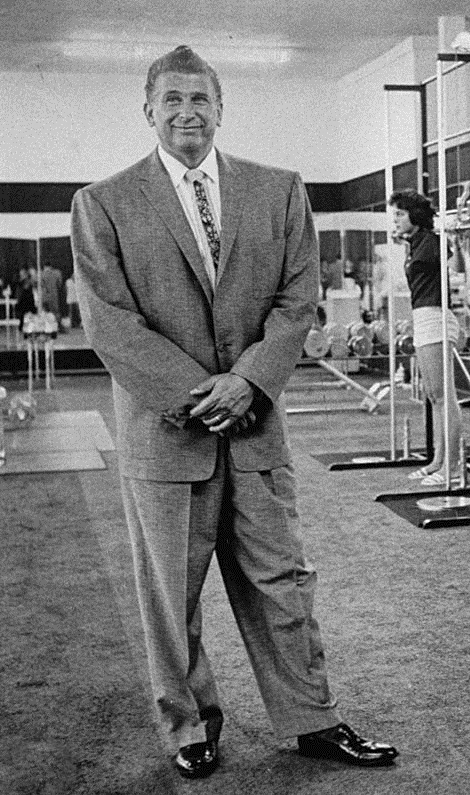
This entrepreneurial spirit, gleaned from his father, spurred Vic on and he opened several gyms in 1947 in the Los Angeles area. The expansion of the chain from here was rapid and aggressive. By 1960 his chain had over 80 clubs throughout the US, leading Wisdom magazine in 1961 to heralded him as “America’s Greatest Physical Educator”.
Tanny is also credited with popularising many of today’s tried and tested sales and marketing tactics including a focus on low margins and high volume, membership contracts, the hard sell and telephone scripts for his sales staff. Most notably, he also a fortune spent on advertising with Time magazine claiming he spent $2 million in 1960 alone.
For all his plaudits, Tanny wasn’t a faultless businessman or indeed character and soon the proverbial bottom fell out of his operation. Mired in controversy, not just himself but the reported behaviour of some of his staff – it’s reported that a manager at one of his gyms locked a woman in his office for an hour in a bid to get her to sign up – the walls began to close in. By 1960 he owed the US government significant back taxes and personally owed creditors over $700,000. After failing to raise extra funds, he began closing locations and by April 1961 he had filed for bankruptcy.
Despite the collapse of his empire, Vic Tanny’s influence spurred on the next great evolution of gyms.
Former Tanny’s Gym employee Donahue “Don” Wildman founded the Health and Tennis Corporation of America in 1962. To establish a national presence without the need for building countless new facilities, Wildman’s Health and Tennis Corp. began acquiring other gyms (including those previously owned by Vic Tanny and Jack LaLanne).
At the height of his empire, Wildman had grown his company to nearly 400 locations, employing more than 20,000 staff and generating over a billion dollars in annual revenue. Wildman sold to his company to arcade game manufacturer Bally Entertainment in 1991 and eventually retired a few year’s later at the age of 61.
Another notable figure, supposedly influenced by Vic Tanny, is Joe Gold. Gold is said to have worked in a Tanny’s Gym for a time and been friends with the man himself. Gold saw an opportunity to take things in a different direction and rather than focus on a multi-purpose facility, he wanted a dedicated place for weightlifting and bodybuilding.

In 1965, Gold opened Gold’s Gym, just a short distance away from Muscle Beach in Santa Monica where he had originally cut his teeth. Over the next few years, Gold’s would become synonymous with bodybuilding and attract many of the greats including Arnold Schwarzenegger and Dave Draper, to name a few.
This period also saw the emergence of the first women’s only gym chain. In 1969, Tajikistan immigrant Lucille Roberts and her husband opened a facility in Manhattan. The aim was to provide a place for women to exercise away from the usual male-dominated (or male-exclusive) gyms that existed.
Originally called The Body Shop, the name was quickly changed to simply ‘Lucille Roberts’ as the initial perception by the public was that it was some sort of mechanics business. Roberts had seemed strike gold, offering women something they had previously not had before. She eventually grew the chain to 50 chains, securing 200,000 members.
The 80s and 1990s are where things start to feel like very familiar territory indeed. Comparing these decades to what came before, you could say that momentous, evolutionary leaps slowed down. Instead, gyms went through a period of refinement.
In 1983, American businessman Mark Mastrov opened 24 Hour Nautilus and as the name suggests, it was a 24-hour fitness facility. He would eventually go on to grow the business, founding 24 Hour Fitness and opening over 400 clubs in the US.
1997 revealed to the world that a low-cost, no-frills budget gym chain was viable. Founded by German Rainer Schaller, McFit created the blueprint that today’s budget chain powerhouses, the likes of PureGym et al, would follow.
Schaller wanted to make fitness affordable for everyone, echoed by the first club’s original strapline: The fitness hall for all. Currently, McFit has over 240 clubs spread across Europe, over 1 million members and is considered Germany’s largest fitness chain.
The 90s and early 2000s also saw the introduction of many global brands we know today including Life Time (1990), luxury chain Equinox (1991), Total Fitness (1993), Virgin Active (1999) and CrossFit (2000), to name a few.
Since their inception, what’s abundantly clear about and gyms and fitness is that have moulded themselves to meet the needs of the populous. For the Ancient Greeks, it was about meeting society’s ideals and expectations of what a man should be. For the gymnastic schools, those founded by Friedrich Jahn, it was a matter of restoring national pride.
Mid 19th to early 20th century developments brought about the idea of doing exercise simply for the sake of it (and hopefully enjoying). By the middle to the late 20th century, gyms were available for every kind of need and want, whether it was to stay in shape to look good for a spouse, exercise because it was the popular trend, or chase the forgotten physique of a Grecian god.
You might argue that the Greek ideal of cultivating both sound body and mind in the same physical space has been completely lost to time. There are a handful of boutique facilities that are attempting to reintegrate culture and education back into the exercise environment, but this is far from the mainstream.
Perhaps a grand revival doesn’t actually need to happen as the current model simply works for millions worldwide. It will, however, be interesting to see what the next great advancement in gyms will be. Could it lie with where we actually exercise? Are there untapped physical and mental benefits yet to be explored? Could technology and AI provide the next breakthrough? Only time will tell…
Back to articlesAnd get the fast-paced world of personal training delivered straight to your inbox every week
Great news, you're on the list...